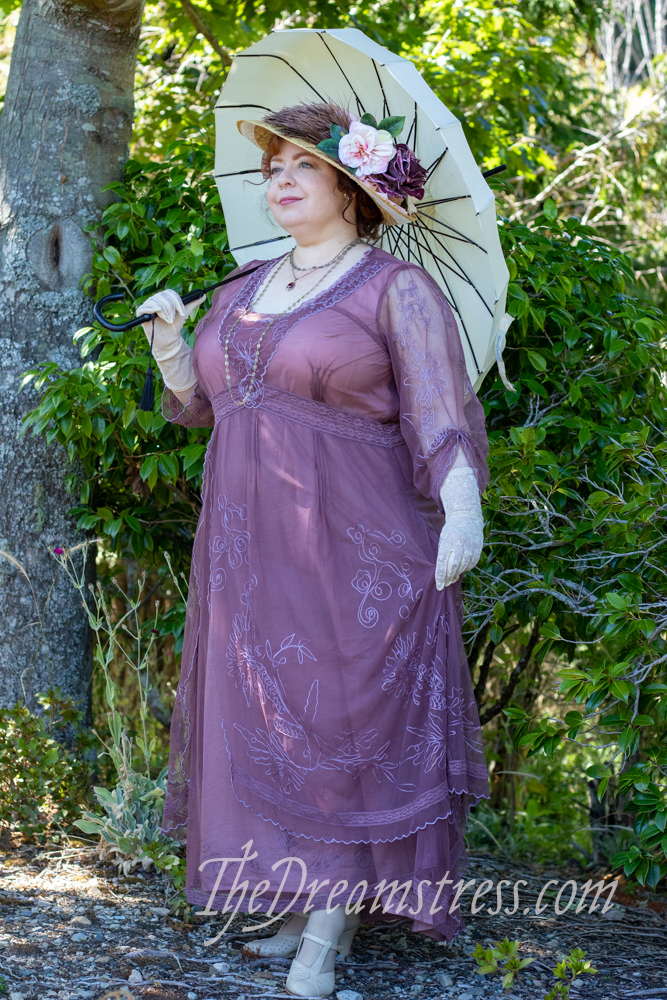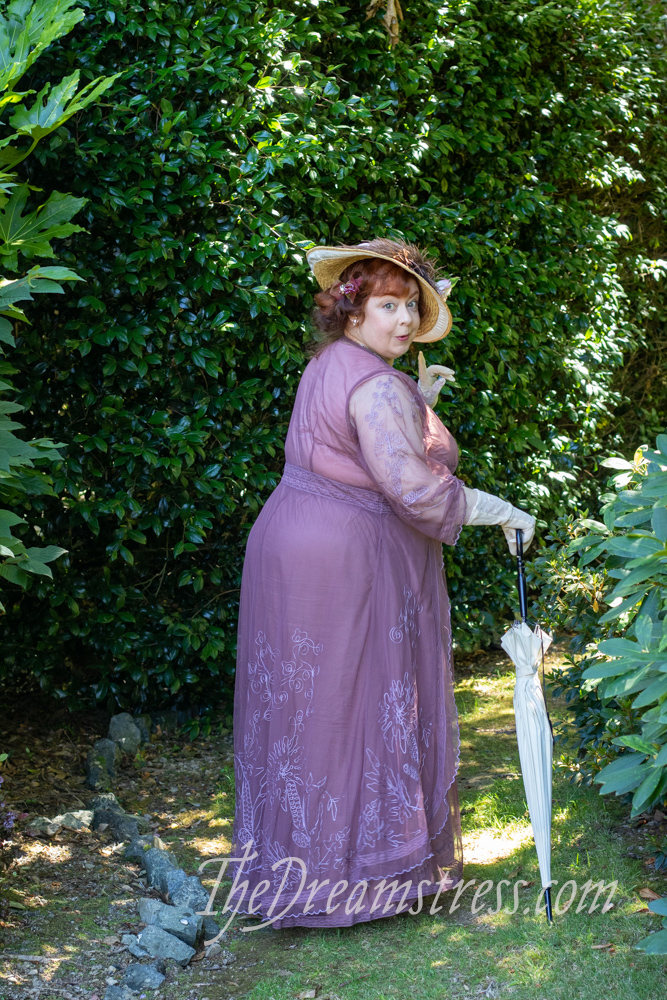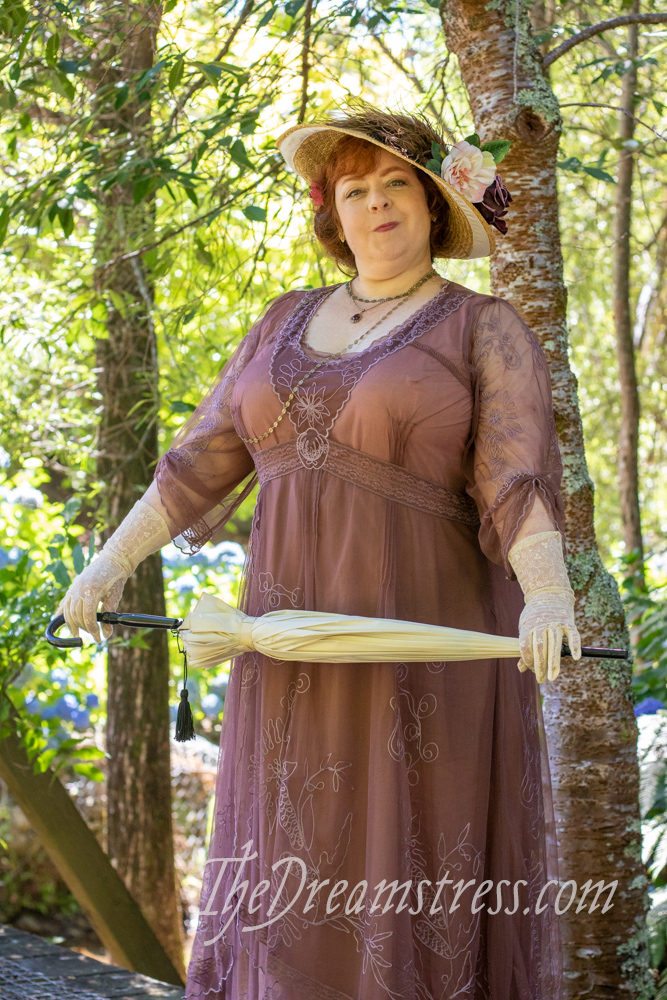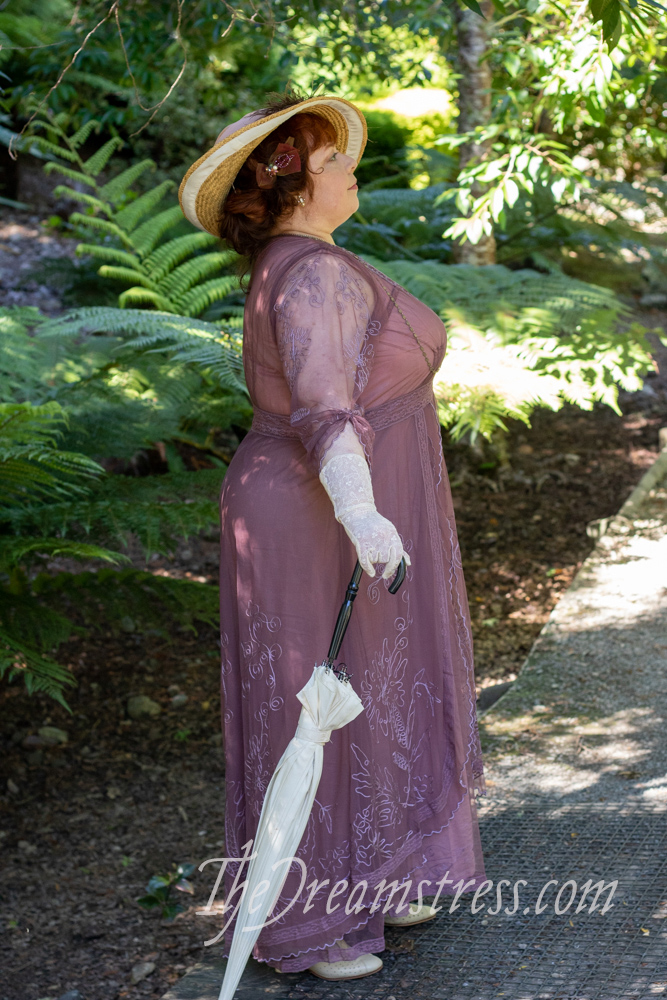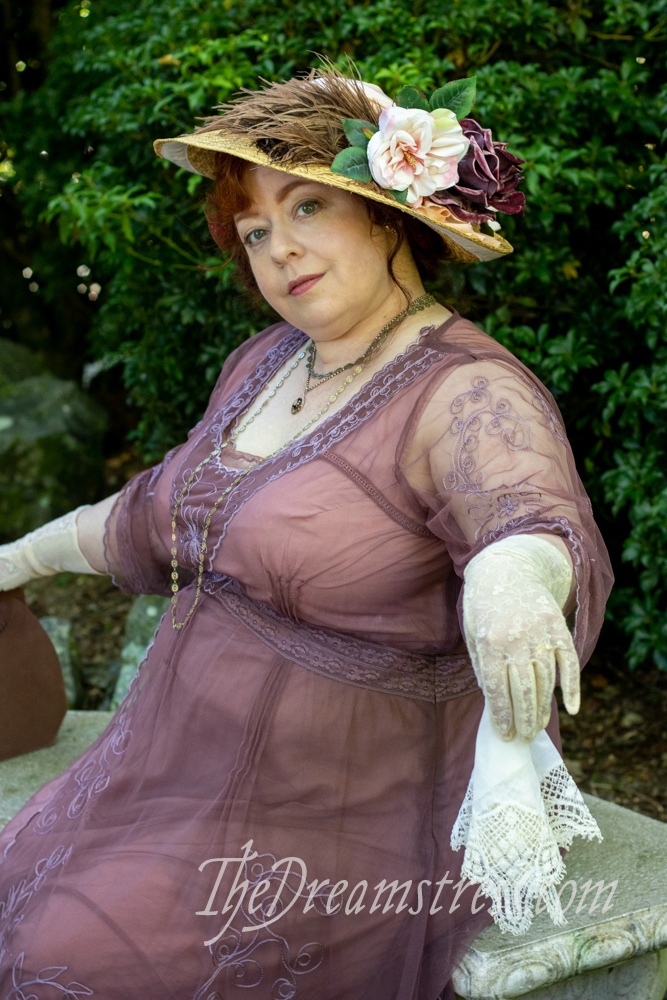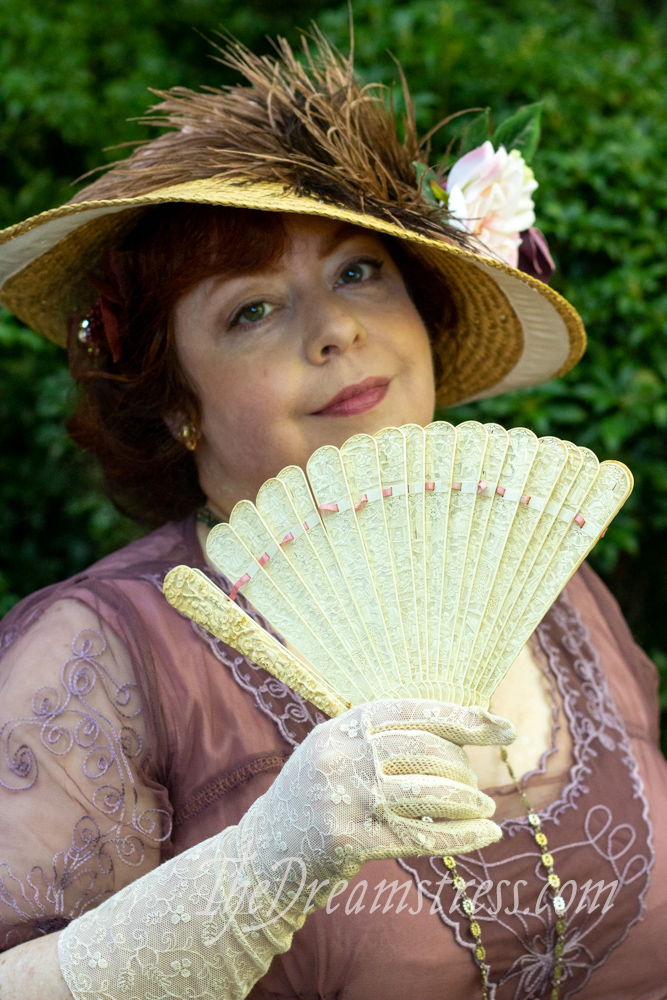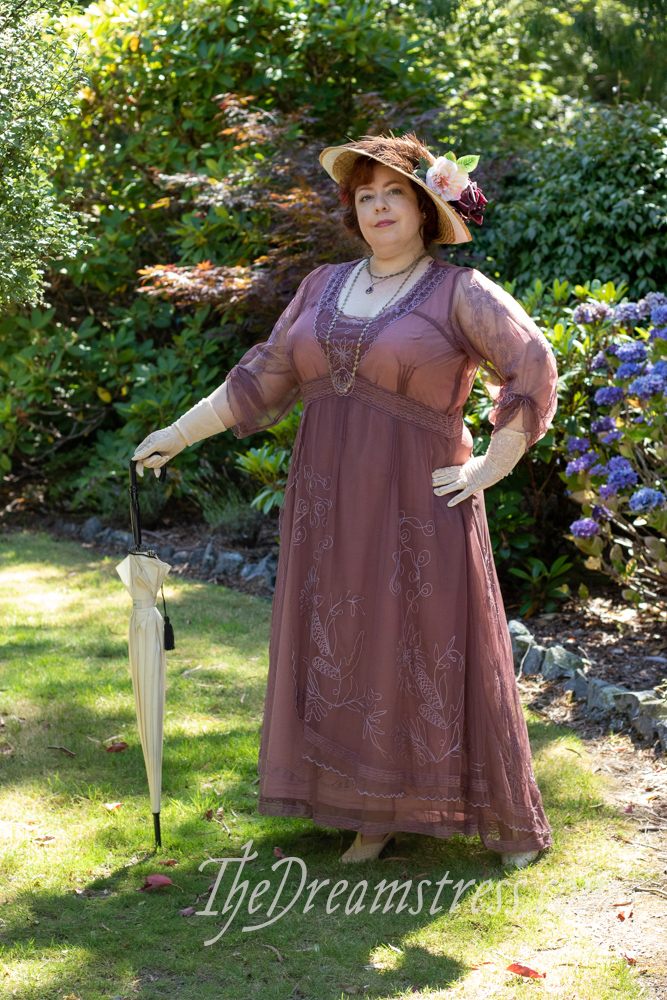This post is late because I booked my schedule to the limit without giving myself any space for emergencies and things going wrong – which meant of course there were, and they did! It’s also late because my browser freezes every time I visit the Centraal Museum’s website, which is rather annoying when you’re trying to Rate a Dress from that site.
Last Week: An 1810s dress of pink roll-printed cotton, with lots of frills
Comments on last week’s dress focused on how frilly and pink and youthful it was – and how much it reminded some of you of a nightgown! For some people that wasn’t an issue, or even made the dress more charming. For others….not so much.
The Total: 7.6 out of 10
Looking like a nightgown was a little too much for some of you, and the rating definitely reflects that.
This week: a mid 1890s dress in red silk faille and silk velvet
A number of the comments on last week’s dress focused on how girlish it was. I feel confident in saying that week’s dress is definitely not a debutant frock.
The deep red shades and heavy fabrics are definitely one for a mature woman who was not afraid to make a statement.
I picked this dress for Rate the Dress almost entirely based on the front bodice decoration. The rest of the dress is very nice and typical of its time (although I feel that the bustle its been staged with is too large – a common fault with the Centraal Museum’s costume staging), but the frayed fringing is interesting. And interesting is what makes Rate the Dress fun.
The dress has many elements of 18th century historicism: the deep, square neckline; a petticoat and stomacher effect front; and the length of the sleeves and lace engageantes. The frayed fringing is a nod to 18th century pinked trim, with a Victorian twist.
The last time I showed a dress with frayed fringing the trim was not particularly popular. Will this dress receive a different reception?
Rate the Dress on a Scale of 1 to 10
A reminder about rating — feel free to be critical if you don’t like a thing, but make sure that your comments aren’t actually insulting to those who do like a garment. Phrase criticism as your opinion, rather than a flat fact. Our different tastes are what make Rate the Dress so interesting. It’s no fun when a comment implies that anyone who doesn’t agree with it, or who would wear a garment, is totally lacking in taste.
As usual, nothing more complicated than a .5. I also hugely appreciate it if you only do one rating, and set it on a line at the very end of your comment.

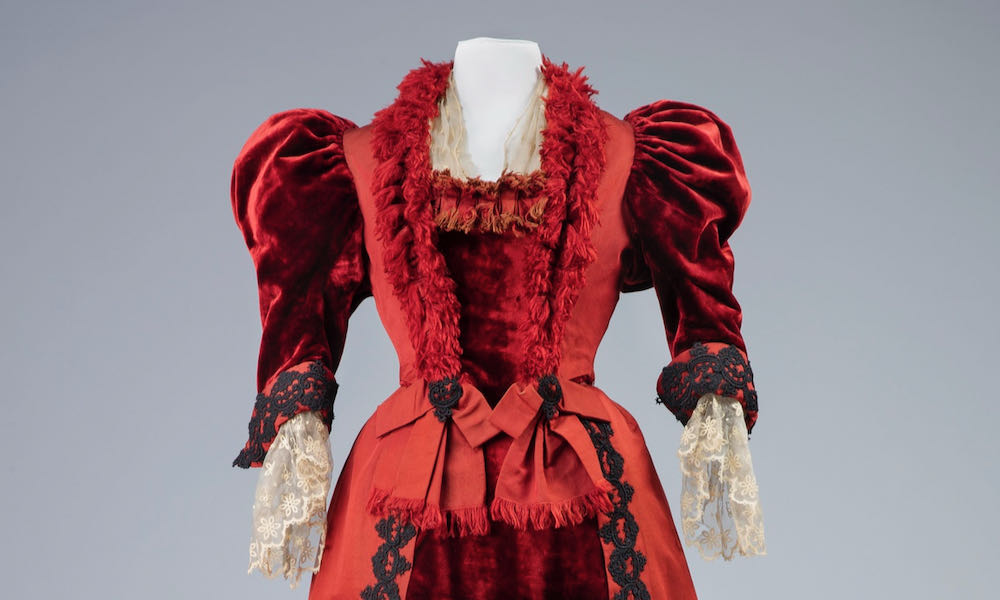
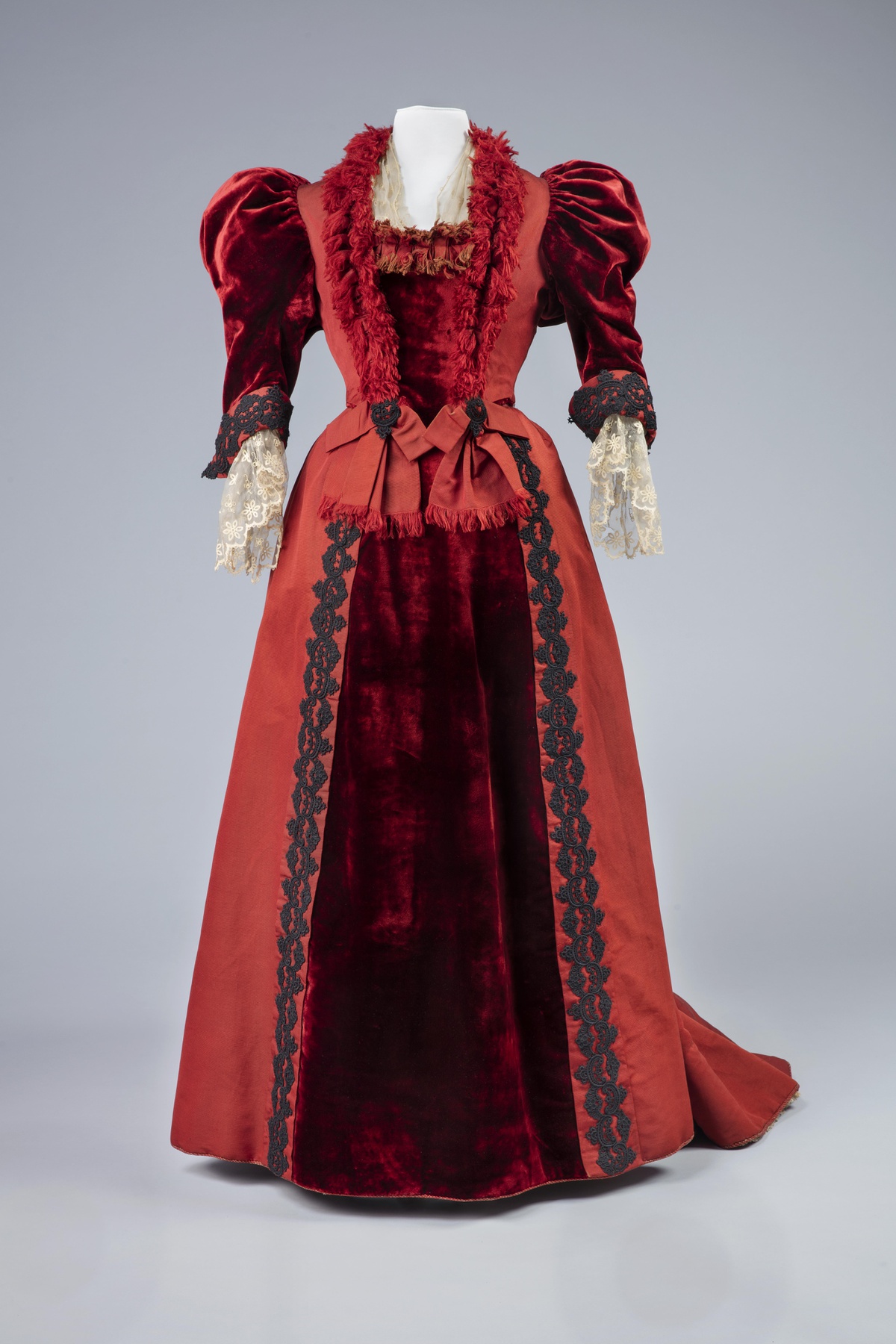
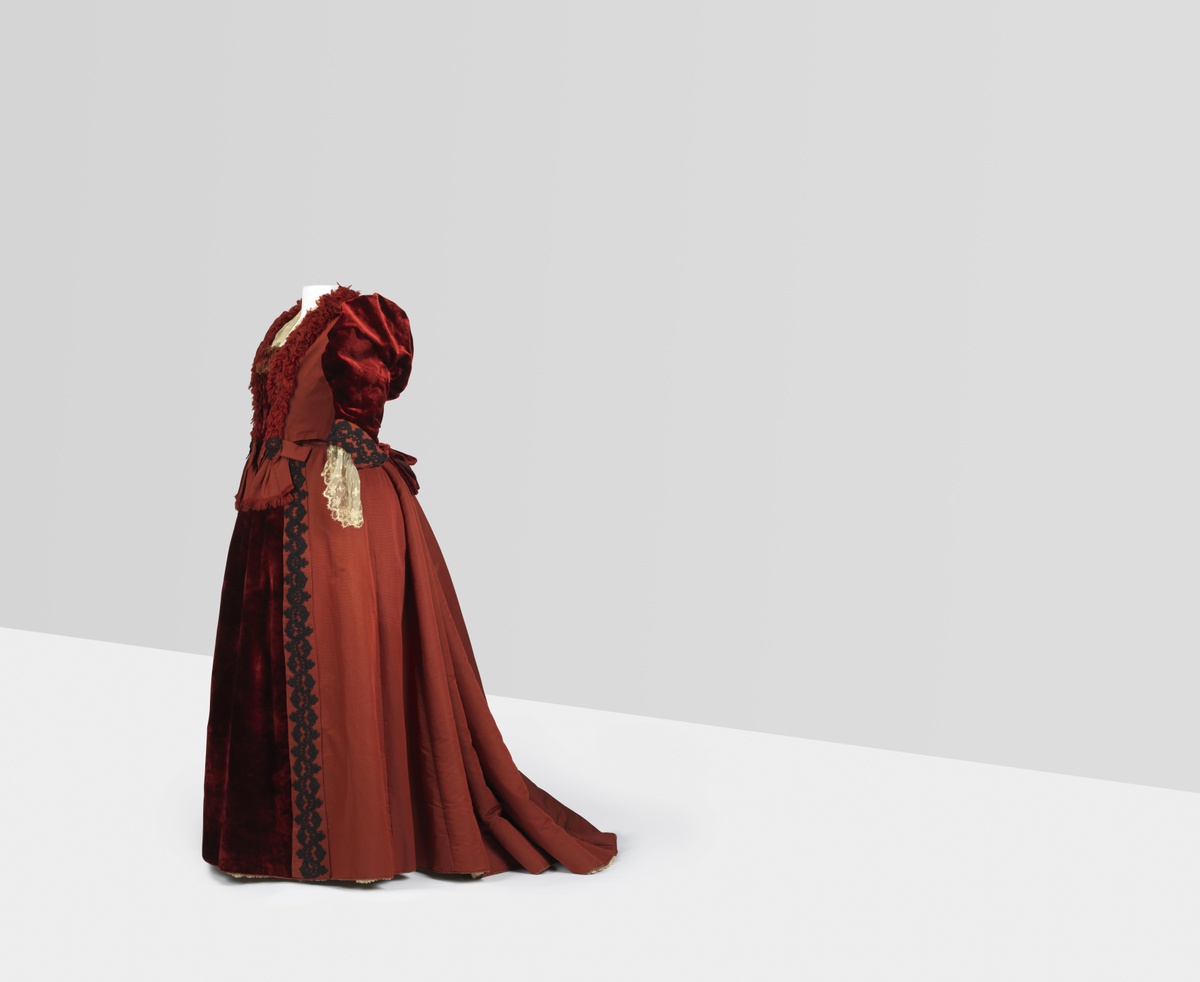
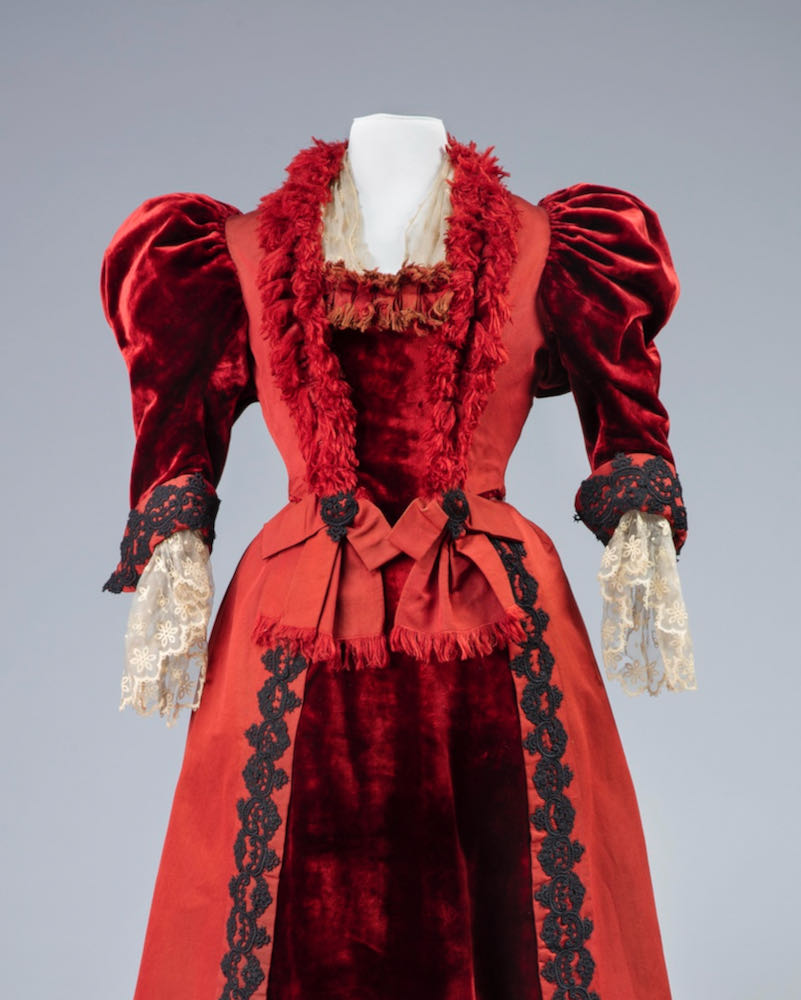
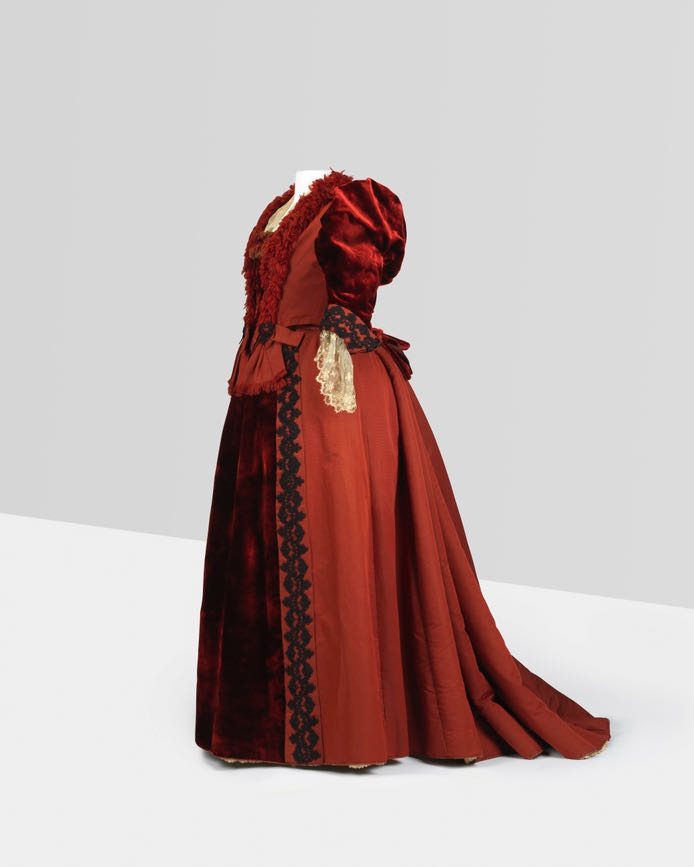
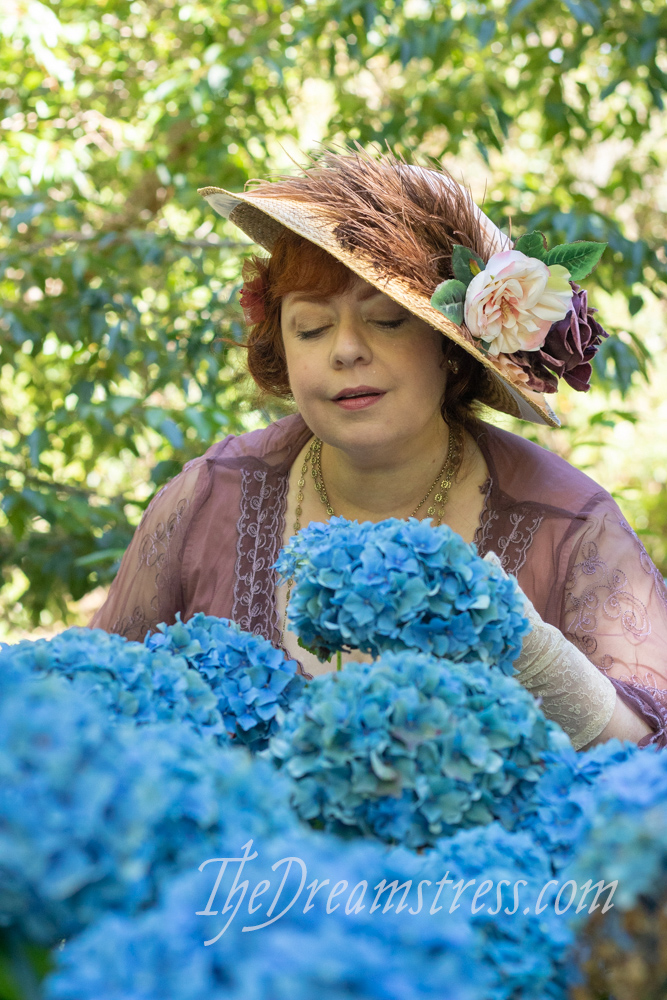
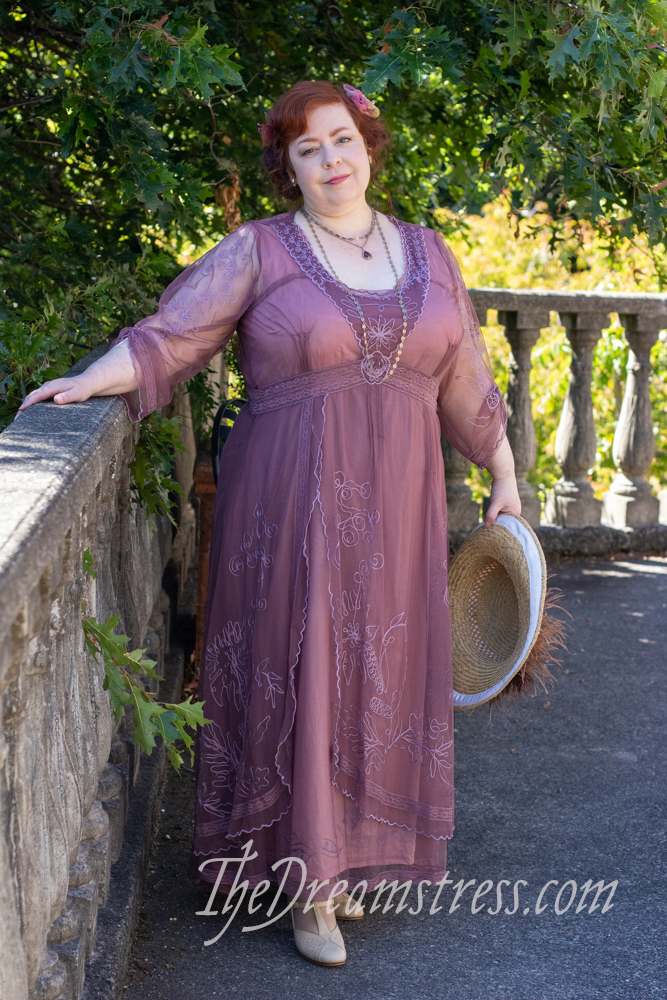
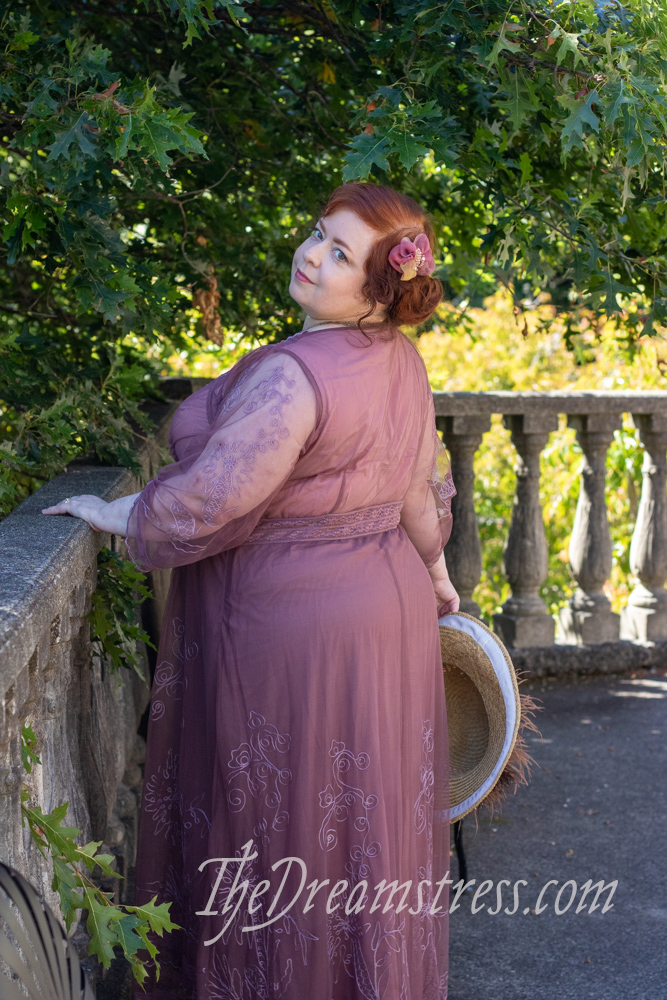
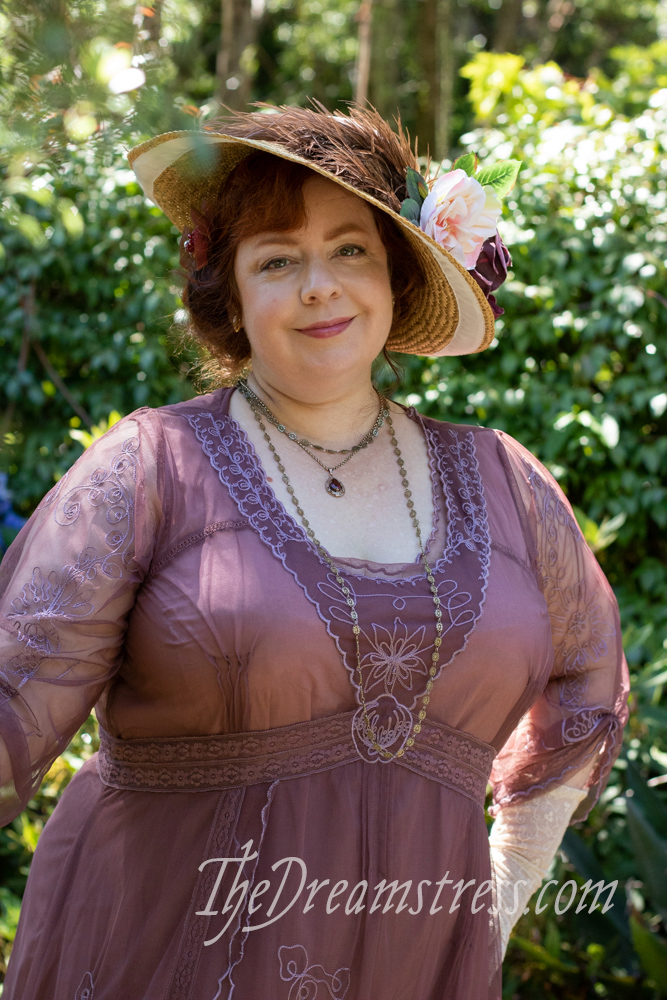
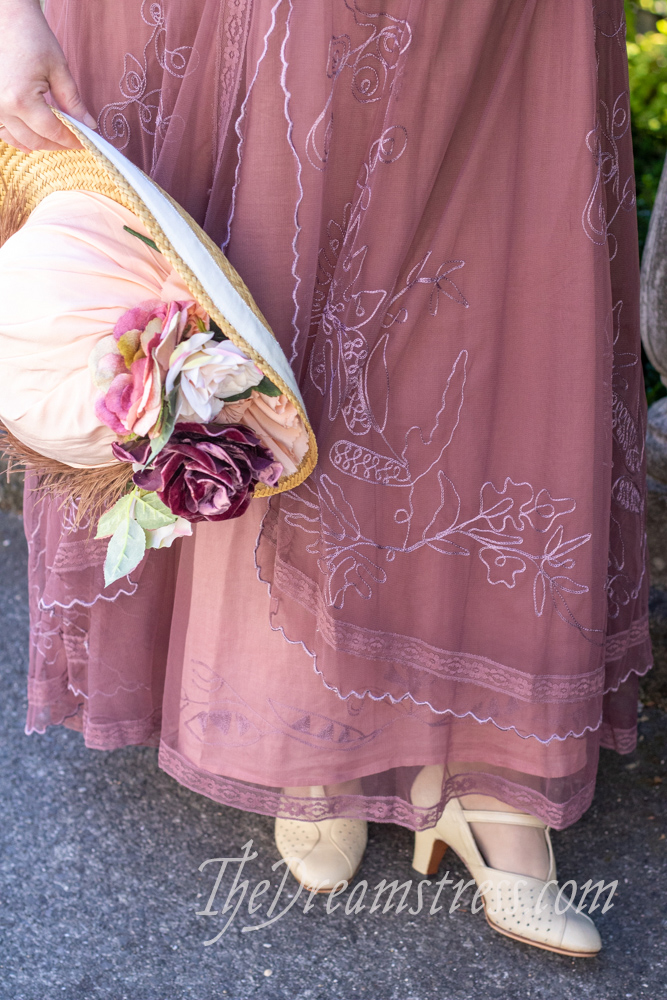 We added a bunch of roses to
We added a bunch of roses to 